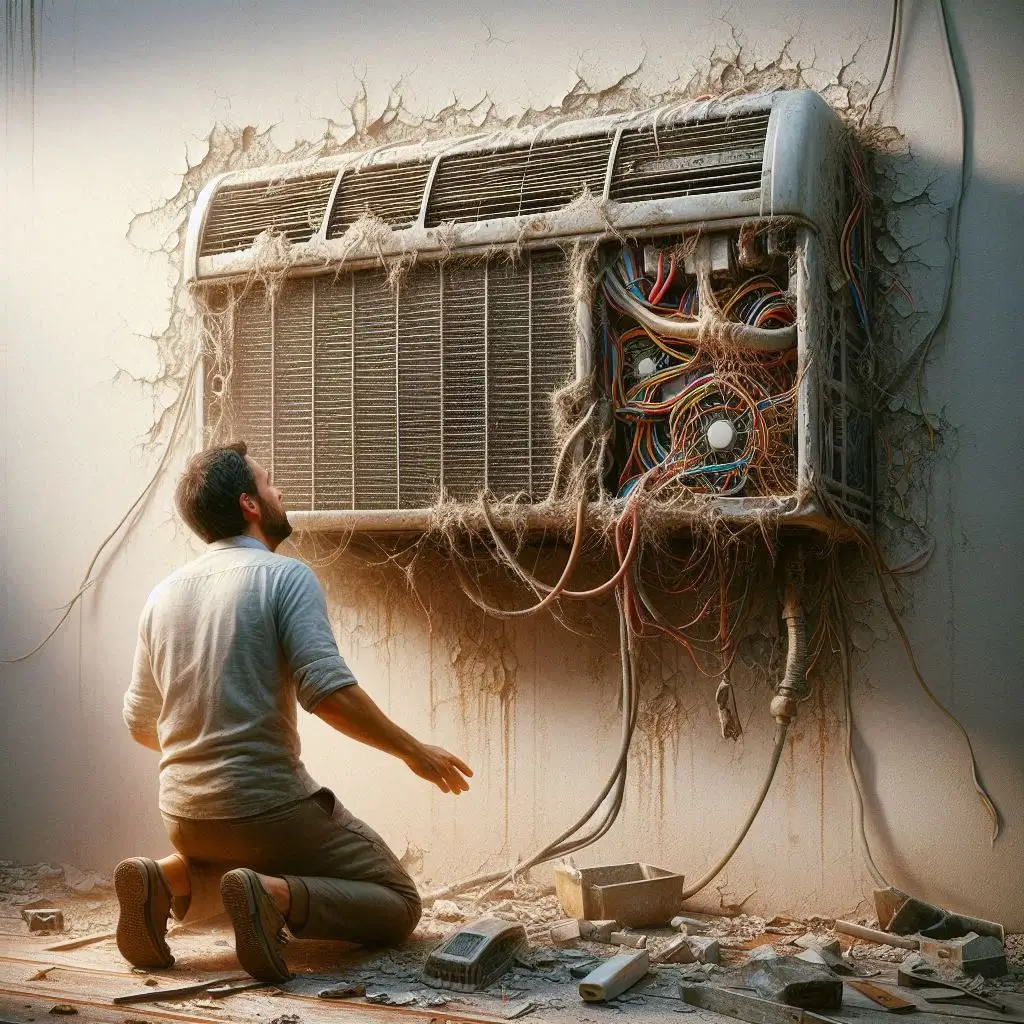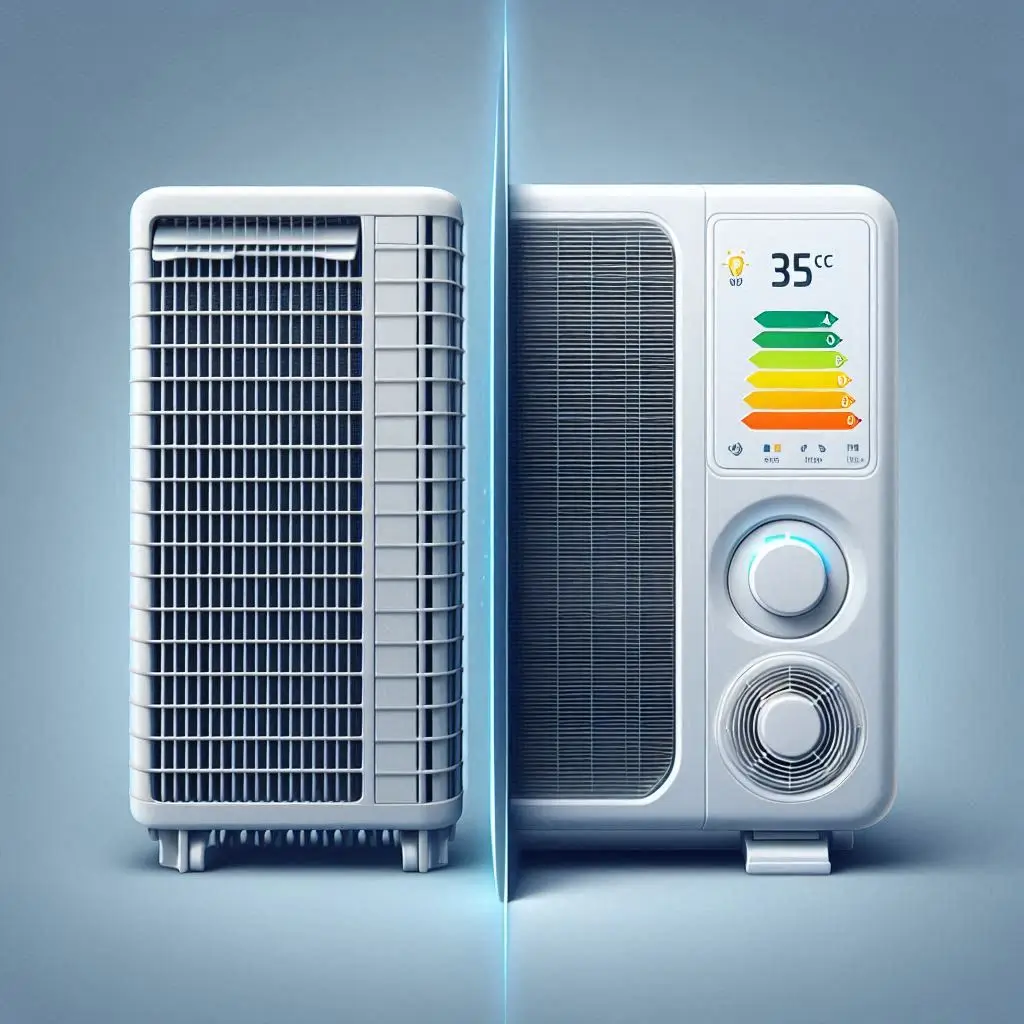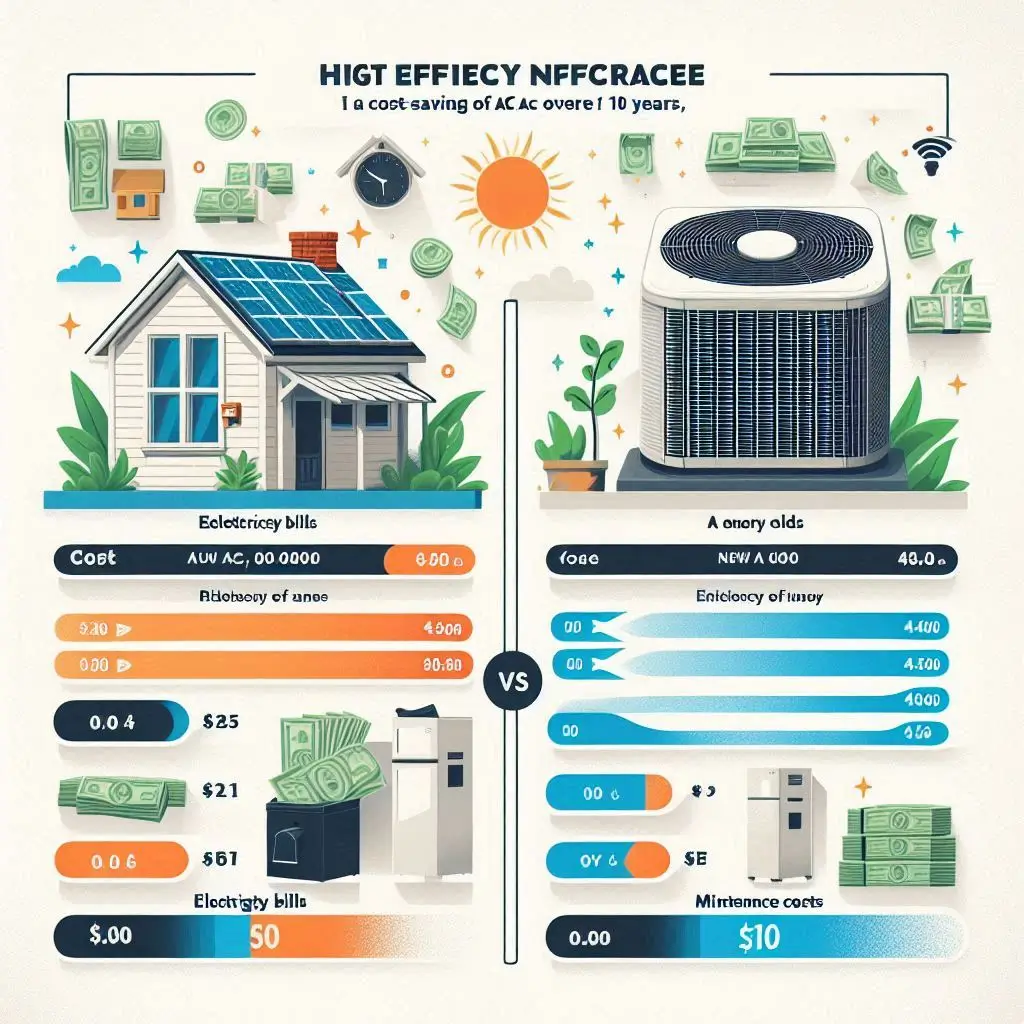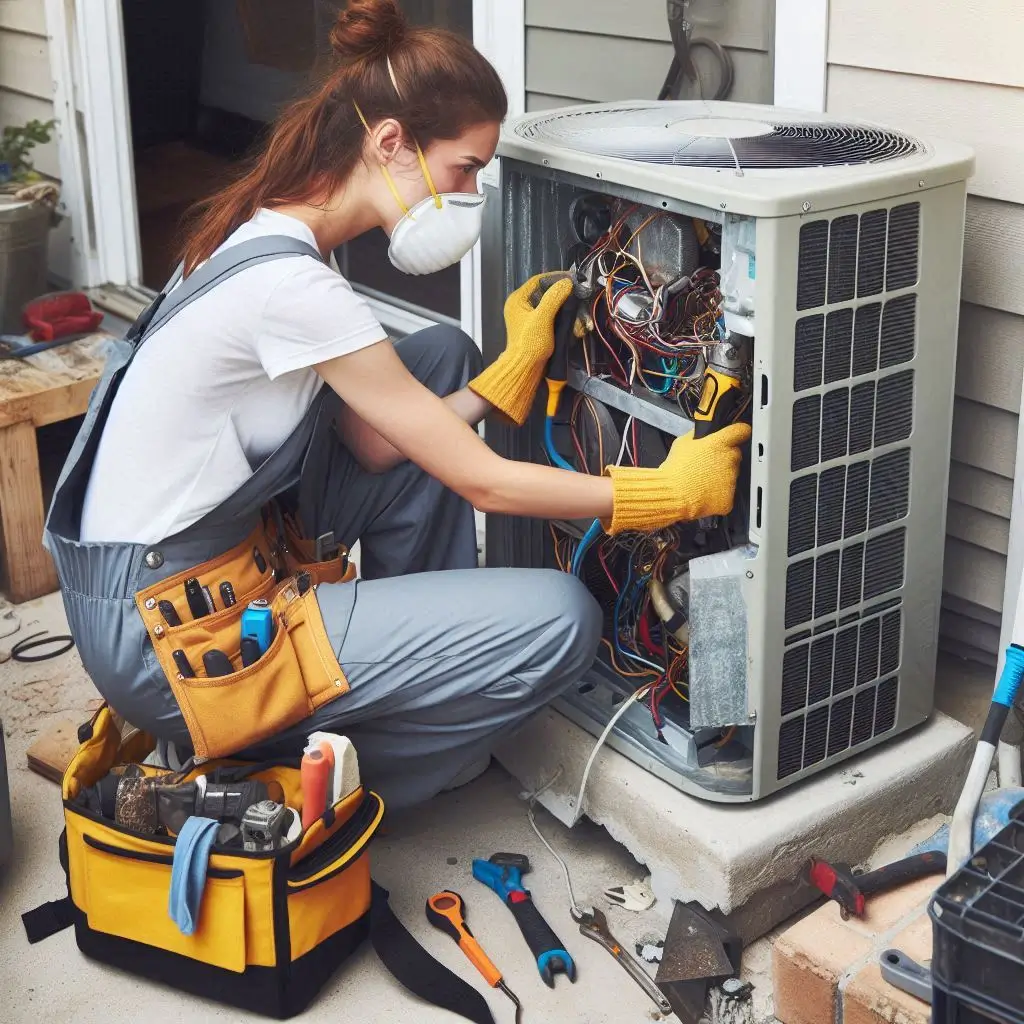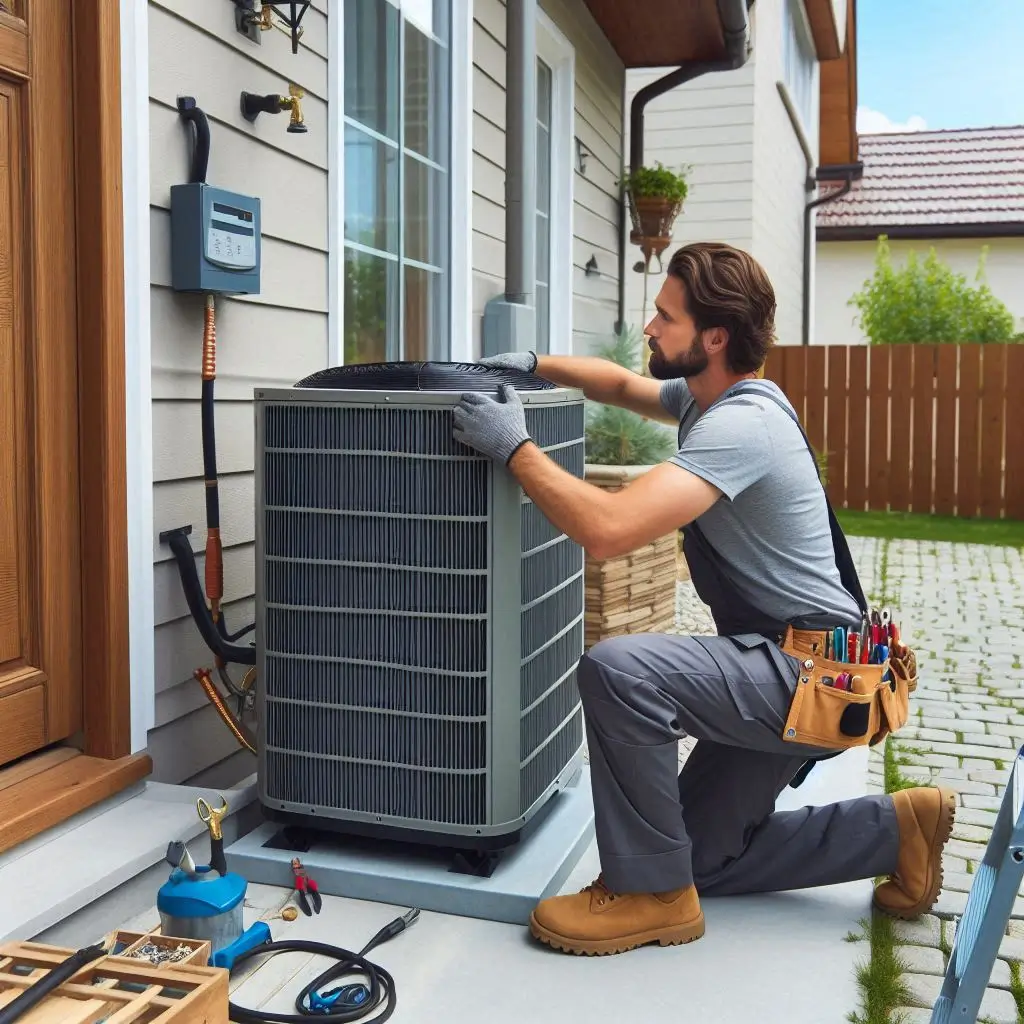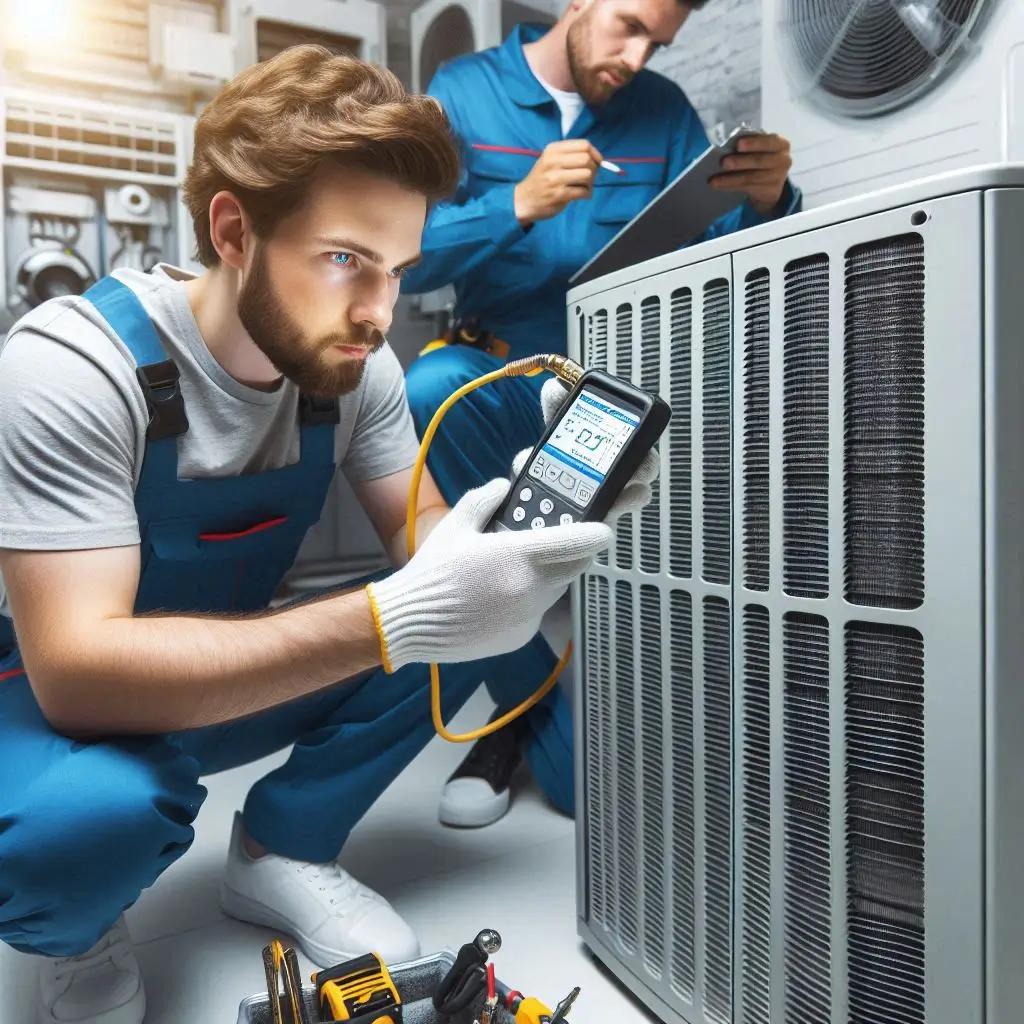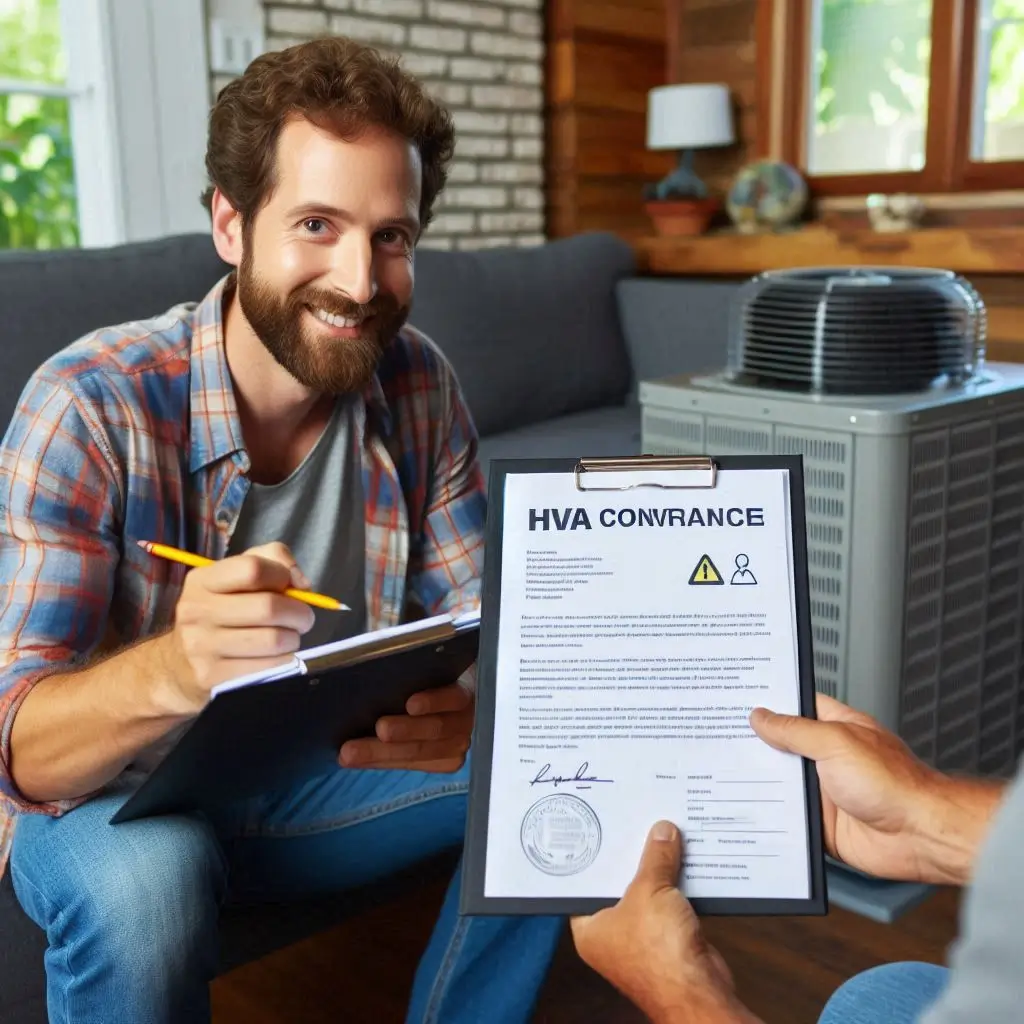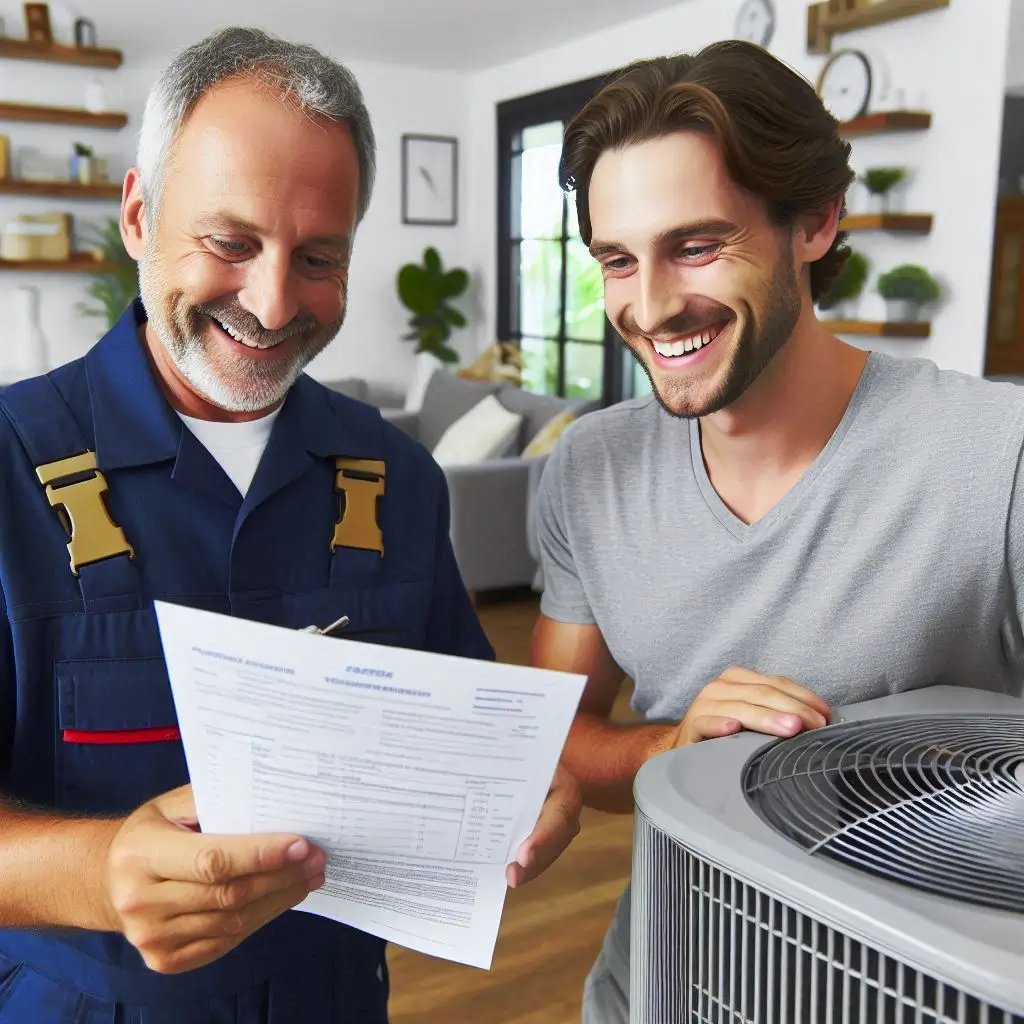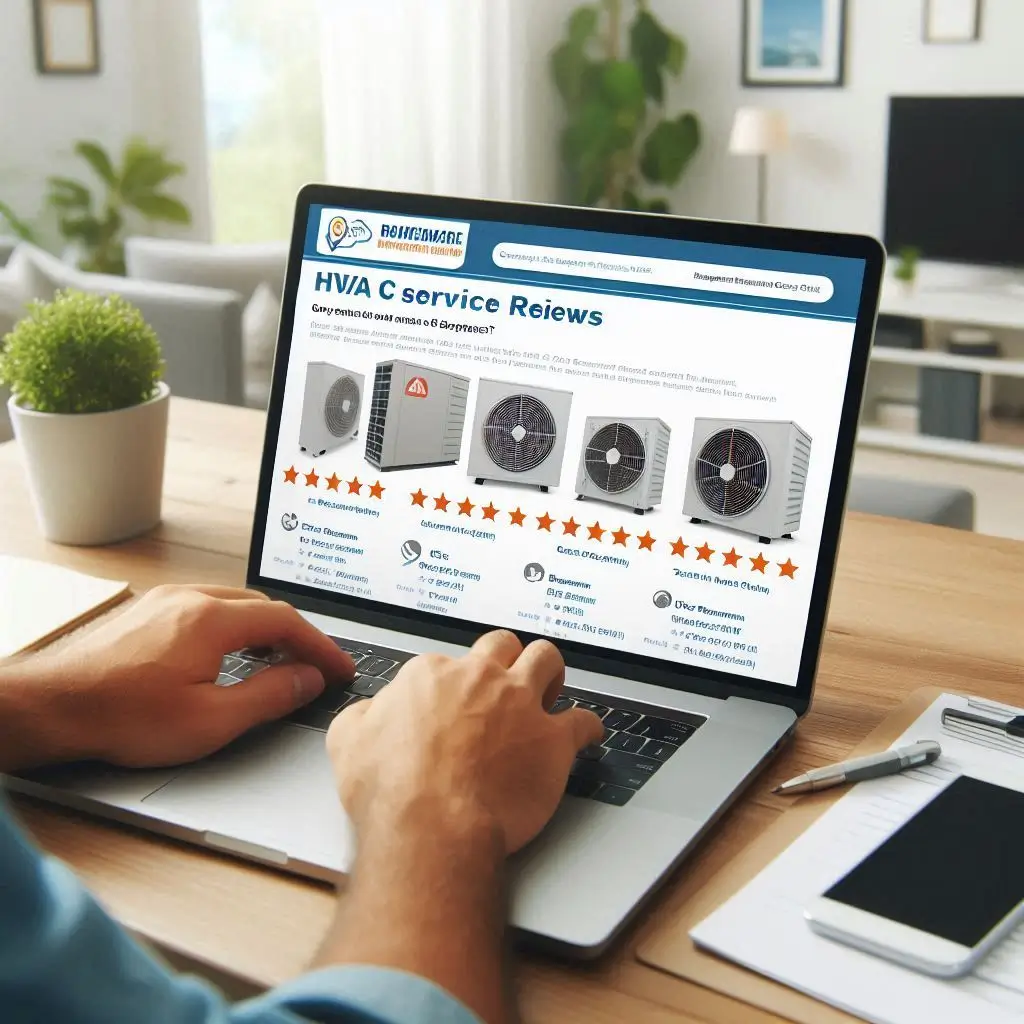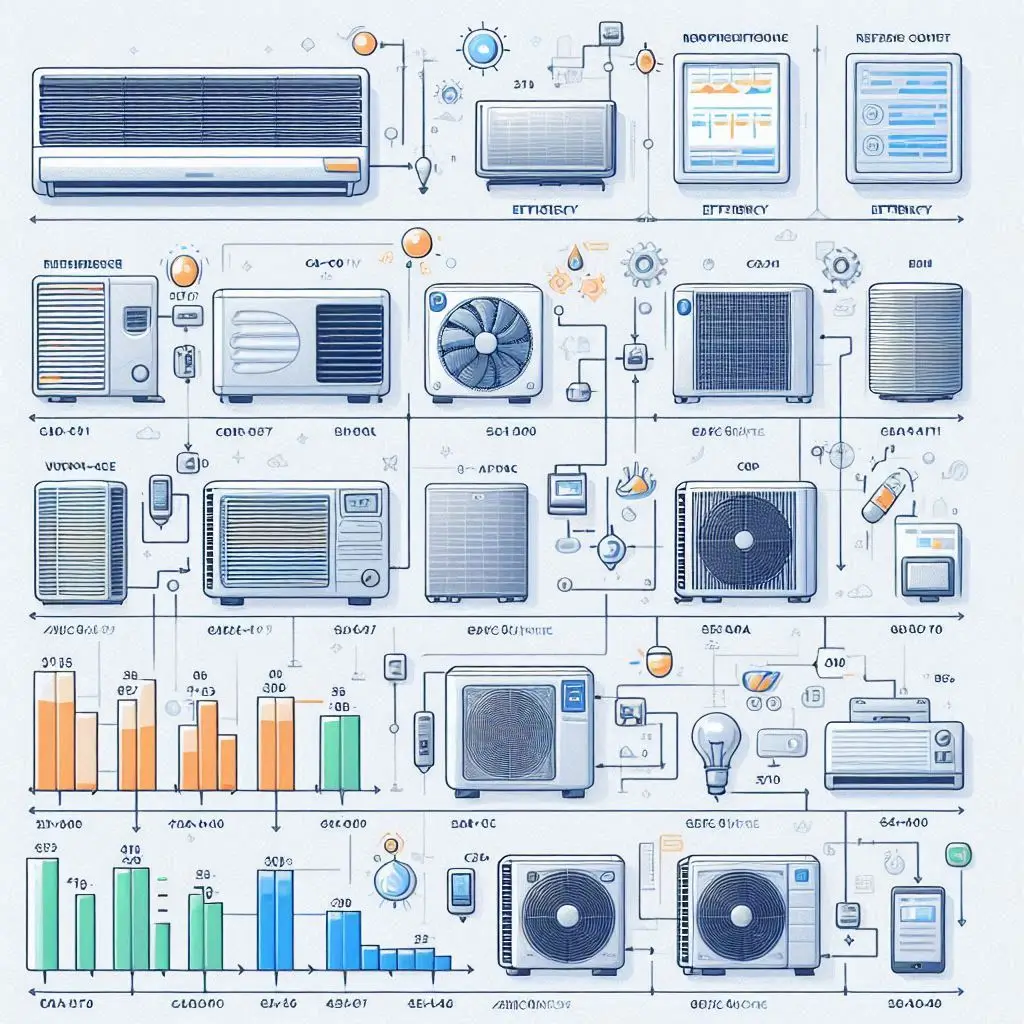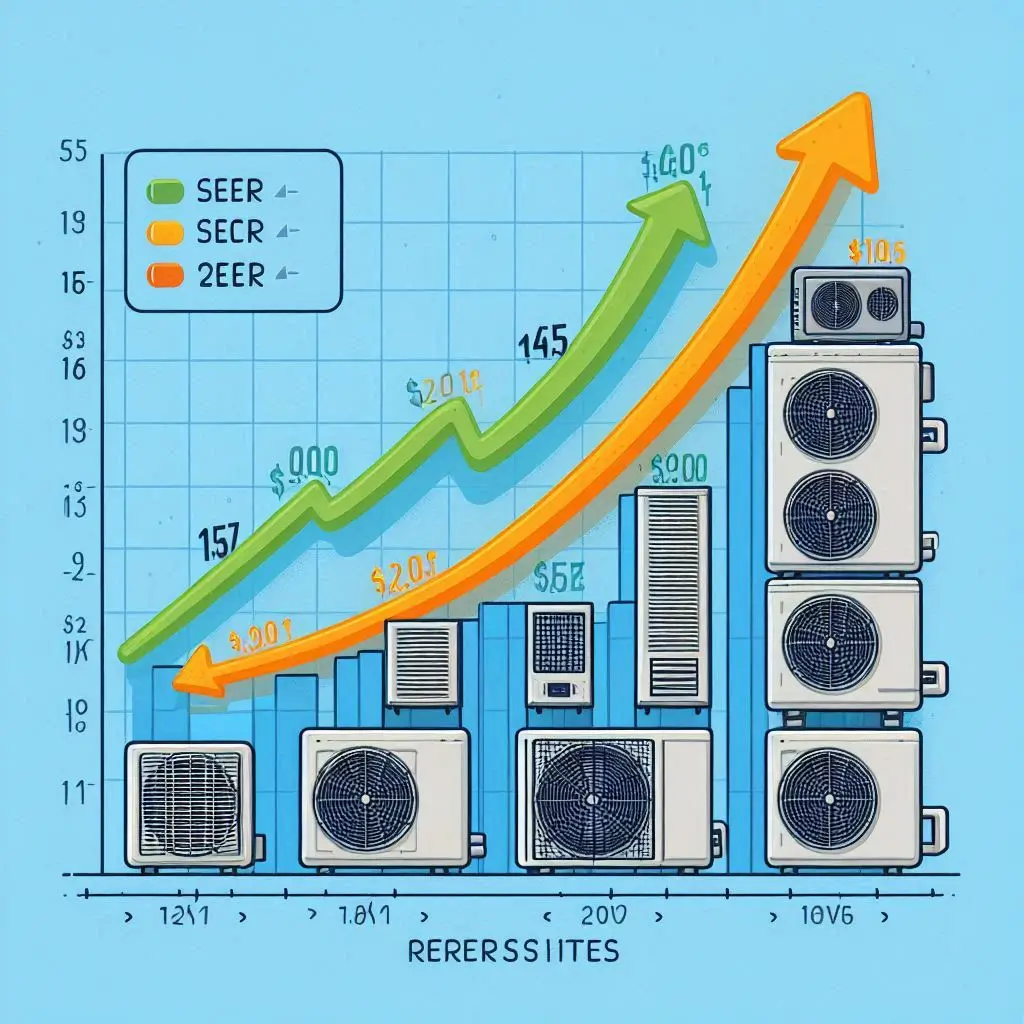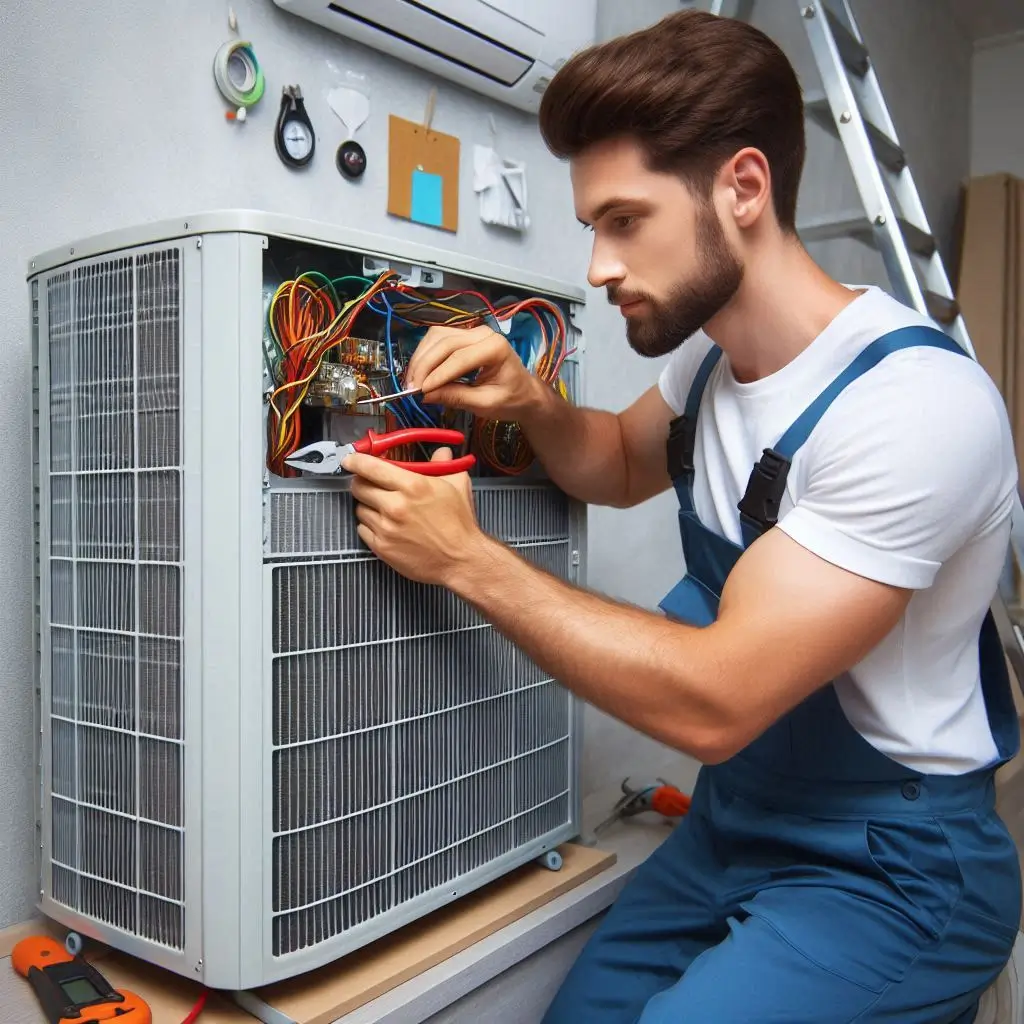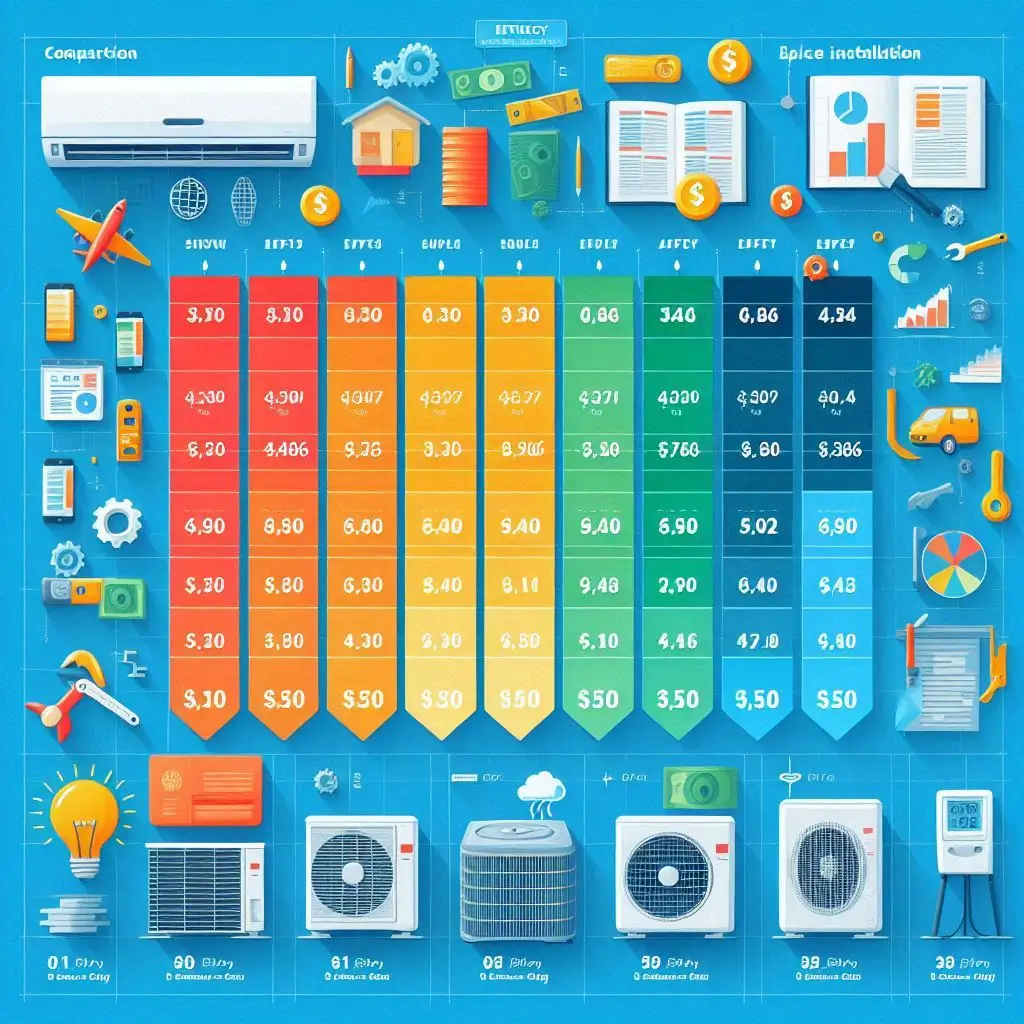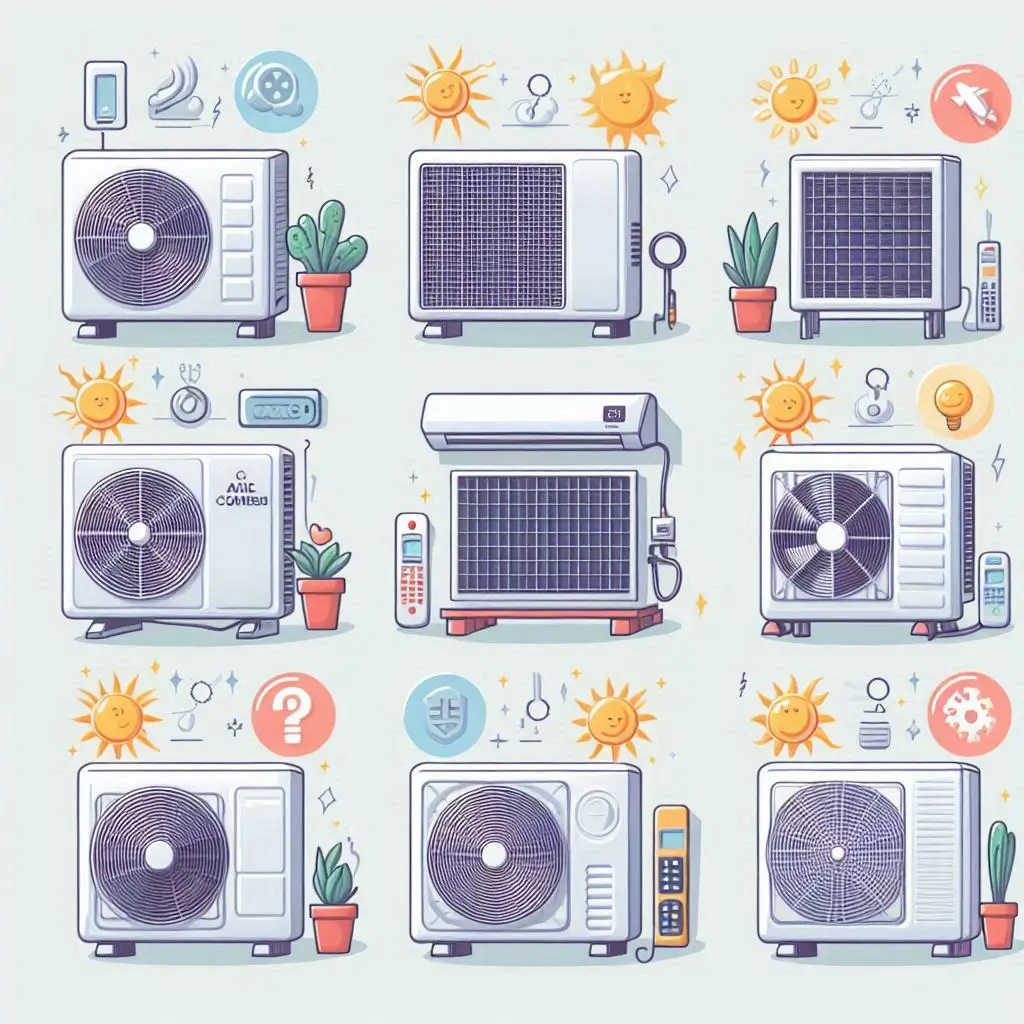Why Replacing Your AC is Essential
Many homeowners delay AC replacement due to concerns about cost, but an outdated or malfunctioning air conditioner can cost more in repairs and energy bills over time. Replacing your AC at the right time ensures a more efficient, reliable, and cost-effective cooling system.
Signs Your AC Needs Replacement
If you’re unsure whether it’s time to replace your air conditioner, look out for the following warning signs:
1. Frequent Repairs and Breakdowns
If your AC unit requires constant repairs, it might be more cost-effective to replace it rather than continue spending money on temporary fixes. A new system will save you from the inconvenience of unexpected breakdowns.
2. Rising Energy Bills
Older AC units tend to lose efficiency, causing them to consume more power to maintain indoor cooling. If you’ve noticed a significant increase in your energy bills despite regular maintenance, it may be time to upgrade to an energy-efficient system.
3. Inconsistent Cooling or Hot Spots
If some rooms in your home remain hot while others are cool, your AC may be struggling to distribute air evenly. This could be due to an aging system, leaky ducts, or an undersized unit. A new AC installation can ensure even cooling throughout your home.
4. Your AC is Over 10-15 Years Old
Most air conditioners have a lifespan of 10 to 15 years. If your unit is nearing this age, it’s best to consider a replacement before it fails completely. Newer models come with improved technology that enhances performance and energy efficiency.
5. Strange Noises or Unusual Odors
Loud grinding, rattling, or buzzing noises often indicate mechanical problems within your AC. Additionally, musty or burning smells could be a sign of mold, electrical issues, or motor failure. If these issues persist, replacing your AC may be the best solution.
6. Excessive Humidity Levels Indoors
An inefficient AC system may struggle to regulate indoor humidity levels, leading to mold growth, musty odors, and discomfort. Upgrading to a new unit with better dehumidification capabilities can improve indoor air quality.
Benefits of a New Air Conditioning System
Replacing your AC isn’t just about avoiding repairs; it’s also about upgrading to a more efficient and reliable system that enhances comfort and savings. Here are the key advantages of installing a new air conditioner:
1. Improved Energy Efficiency
Modern air conditioners come with advanced technology, such as high SEER (Seasonal Energy Efficiency Ratio) ratings, variable-speed compressors, and smart thermostats. These features help reduce energy consumption and lower electricity bills.
2. Enhanced Indoor Air Quality
Newer AC models have improved air filtration systems that help remove dust, allergens, and pollutants. Some units even include built-in humidity control to maintain healthier indoor air.
3. Consistent and Faster Cooling
Upgraded AC units use advanced airflow technology to distribute cool air evenly throughout your home. With better temperature control, you won’t have to deal with hot and cold spots anymore.
4. Reduced Carbon Footprint
Energy-efficient air conditioners consume less power, reducing your overall carbon footprint. Many modern AC systems also use environmentally friendly refrigerants that comply with new regulations.
5. Smart Features for Convenience
Many modern air conditioners come with smart features like Wi-Fi connectivity, remote control via smartphone apps, and voice command compatibility. These features allow you to adjust your home’s cooling settings from anywhere, ensuring maximum comfort and efficiency.
6. Increased Home Value
A new AC system is a valuable investment that enhances the resale value of your home. Potential buyers often look for homes with modern and efficient HVAC systems, making your property more appealing.
7. Warranty and Long-Term Savings
New AC systems come with manufacturer warranties, giving you peace of mind. With reduced repair costs and higher efficiency, you’ll experience significant long-term savings.
Factors to Consider When Replacing Your Air Conditioner
When it comes to air conditioner replacement near me, choosing the right unit is crucial for long-term comfort, efficiency, and cost savings. Selecting a new AC system involves more than just picking a model; you need to consider energy efficiency, size, and long-term benefits. This guide will walk you through essential factors to help you make the best decision for your home.
Choosing the Right AC Unit for Your Home
Selecting the perfect air conditioning system is essential for maintaining optimal comfort. The right AC should match your home’s size, cooling requirements, and climate conditions.
1. Determining the Right Size (BTU and Tonnage)
Air conditioners are measured in British Thermal Units (BTU) or tons, which indicate the unit’s cooling capacity. An AC that is too small will struggle to cool your home, while an oversized unit will cycle on and off frequently, leading to inefficiency.
Factors that determine the correct AC size include:
- Square footage of your home
- Number of windows and insulation quality
- Local climate and humidity levels
- Number of occupants in the home
A professional HVAC technician can perform a Manual J Load Calculation to determine the exact cooling capacity required.
2. Types of Air Conditioners to Consider
Depending on your home’s layout and cooling needs, you can choose from various types of AC systems:
- Central AC Systems – Ideal for whole-house cooling with ductwork.
- Ductless Mini-Split Systems – Perfect for homes without ductwork or for zoning different areas.
- Window AC Units – Suitable for cooling individual rooms.
- Portable AC Units – Flexible but less efficient for long-term use.
Energy Efficiency and Cost Savings
One of the most important considerations when replacing your air conditioner is its energy efficiency. A more efficient AC unit not only reduces your electricity bills but also lowers your carbon footprint.
SEER Ratings and Why They Matter
The Seasonal Energy Efficiency Ratio (SEER) rating determines how efficiently an air conditioner operates over an entire cooling season. The higher the SEER rating, the more energy-efficient the unit.
Key Points About SEER Ratings:
- The minimum SEER rating for new AC units in the U.S. is 14 (or 15 SEER in some states).
- High-efficiency units can have SEER ratings of 20+, offering substantial energy savings.
- Upgrading from an older 10 SEER unit to a 16 SEER unit can reduce cooling costs by 30% or more.
When selecting an AC replacement, look for models with Energy Star certification to ensure optimal efficiency.
Long-Term Cost Benefits of an Efficient AC
Investing in a high-efficiency air conditioner offers long-term financial and environmental benefits.
1. Lower Energy Bills
An energy-efficient AC consumes less power, significantly reducing your monthly electricity costs. Over time, these savings can offset the initial purchase and installation costs.
2. Fewer Repairs and Maintenance Costs
High-efficiency AC units are designed with advanced technology, reducing wear and tear. This leads to fewer breakdowns, lower maintenance costs, and an extended lifespan of the system.
3. Increased Home Value
A new, energy-efficient air conditioning system adds value to your property. If you plan to sell your home, potential buyers will appreciate a modern HVAC system that saves on utility bills.
4. Environmentally Friendly Cooling
Modern AC units use eco-friendly refrigerants such as R-410A or R-32, which have a lower impact on the environment compared to older refrigerants like R-22 (which has been phased out due to its harmful effects on the ozone layer).
Professional Air Conditioner Replacement Process
When searching for air conditioner replacement near me, understanding the professional replacement process can help you make an informed decision. A proper AC replacement involves several crucial steps to ensure efficiency, longevity, and comfort. Below, we will break down the entire process, from the initial inspection to the final quality check, ensuring your new AC system performs at its best.
Steps Involved in AC Replacement
Replacing an air conditioner is more than just swapping out an old unit for a new one. A professional HVAC installation follows a structured process to ensure maximum performance and efficiency.
Initial Inspection and Load Calculation
Before replacing your AC, a professional HVAC technician performs a thorough inspection and a load calculation to determine the right-sized unit for your home.
Key Aspects of the Initial Inspection:
✔ Assessing the current AC unit – Checking its condition, efficiency, and identifying problems.
✔ Inspecting ductwork – Ensuring air ducts are properly sealed and in good shape.
✔ Evaluating insulation and airflow – Verifying if the home’s insulation and ventilation support efficient cooling.
✔ Checking electrical connections – Ensuring the existing wiring can handle the new AC unit.
What is a Load Calculation?
A Manual J Load Calculation is performed to determine the correct AC size for your home. This calculation considers:
- Square footage of your house
- Number of windows and doors
- Home insulation quality
- Local climate and humidity levels
This step ensures you get an AC system that provides optimal cooling without wasting energy.
Removing the Old Unit
Once the inspection is complete, the next step is safely removing the old AC unit. This process must be done carefully to prevent damage to existing ductwork and electrical components.
Steps Involved in AC Removal:
✔ Turning off power – Disconnecting the unit from the electrical supply to ensure safety.
✔ Recovering refrigerant – Removing old refrigerant in compliance with EPA regulations.
✔ Dismantling the old system – Carefully detaching the AC from ducts, mounts, and electrical wiring.
✔ Disposing of the old unit properly – Ensuring it is recycled or disposed of according to local regulations.
This step is crucial because improper removal of refrigerant or old components can lead to environmental hazards and inefficiencies in the new system.
Installing the New Air Conditioner
With the old unit removed, the new high-efficiency air conditioner is installed. This step requires precision to ensure the system operates smoothly.
Key Steps in Installation:
✔ Positioning the outdoor condenser unit – Ensuring proper airflow and spacing for optimal performance.
✔ Mounting the indoor unit – Securing the evaporator coil, blower, and air handler inside the house.
✔ Connecting the refrigerant lines – Properly sealing and charging the system to prevent leaks.
✔ Ensuring proper airflow – Adjusting duct connections and verifying air distribution.
✔ Integrating smart thermostats (optional) – Connecting a programmable thermostat for enhanced energy savings.
A properly installed AC system can reduce energy consumption, improve cooling performance, and extend the unit’s lifespan.
Final Testing and Quality Check
After installation, the system undergoes a series of tests to ensure everything is functioning correctly.
Key Quality Assurance Checks:
✔ Leak detection – Ensuring refrigerant lines are sealed and free from leaks.
✔ Electrical testing – Checking voltage, connections, and ensuring safe operation.
✔ Airflow and cooling efficiency check – Measuring output temperature and verifying even cooling distribution.
✔ Smart thermostat calibration – Setting up temperature schedules for energy efficiency.
✔ Customer walkthrough – Explaining the new system’s features, maintenance tips, and answering questions.
Once all tests are completed, the technician ensures your new AC is running efficiently, providing maximum comfort and savings.
How to Find the Best AC Replacement Service Near You
Finding a reliable AC replacement service near me is crucial for ensuring a smooth and efficient installation. With so many HVAC contractors available, it can be challenging to determine which one is the best fit for your needs. This guide will help you identify the top qualities of a professional HVAC contractor, what to ask before hiring, and how to ensure you get the best service possible.
What to Look for in an HVAC Contractor
When searching for an AC replacement service, not all contractors offer the same level of expertise and service quality. Here are the key factors to consider:
1. Licensing and Certifications
A licensed HVAC contractor ensures that they meet state and local regulations for AC installation. Check if they are certified by organizations such as:
✔ North American Technician Excellence (NATE)
✔ Environmental Protection Agency (EPA)
✔ HVAC Excellence Certification
These certifications prove that the contractor has the necessary training and knowledge to install your air conditioner properly.
2. Experience and Reputation
Look for an HVAC company with years of experience in AC replacement. A company with a long-standing reputation often indicates reliability and expertise.
✔ How long have they been in business? – A well-established company is usually more trustworthy.
✔ Specialization in AC replacement – Not all HVAC companies specialize in full replacements.
3. Transparent Pricing and Estimates
A professional contractor should provide:
✔ Free or affordable consultations to assess your home’s cooling needs.
✔ Written estimates detailing the cost breakdown, including parts, labor, and any additional services.
✔ No hidden fees – Always ask if there are extra charges for labor, disposal, or permits.
Questions to Ask Before Hiring an AC Replacement Service
Before hiring an AC replacement service near me, ask these critical questions to ensure you’re making the best choice.
Are They Licensed and Insured?
A reputable HVAC contractor should be:
✔ Licensed – Ensures they meet state and local regulations.
✔ Insured – Protects you in case of accidents or damages during installation.
Why It Matters:
Hiring an uninsured contractor could leave you liable for any damages or injuries that occur on your property. Always ask for proof of insurance.
Do They Offer Warranties?
Warranties can save you money and provide peace of mind. Ask about:
✔ Manufacturer’s warranty – Covers parts in case of defects.
✔ Labor warranty – Ensures the installation work is guaranteed.
✔ Extended service plans – Some contractors offer additional maintenance plans for long-term protection.
Why It Matters:
A good HVAC company stands by its work and offers warranties on both equipment and labor.
What Are Their Customer Reviews Like?
Online reviews and testimonials provide insight into an HVAC contractor’s service quality. Check:
✔ Google Reviews – Look for contractors with a 4-star rating or higher.
✔ Better Business Bureau (BBB) Ratings – Ensures they have no major complaints.
✔ Customer testimonials – Check for feedback on service, pricing, and professionalism.
Why It Matters:
A company with positive reviews and high ratings is more likely to provide reliable AC replacement services.
Cost of Air Conditioner Replacement and Financing Options
When considering air conditioner replacement near me, understanding the cost factors and financing options is essential. The price of a new AC unit depends on various factors, including unit size, efficiency rating, installation complexity, and available rebates. This guide will break down the cost of AC replacement and provide insight into financing solutions to make your investment more affordable.
Factors That Influence AC Replacement Costs
The cost of replacing an air conditioner can range from $3,000 to $10,000, depending on several factors. Understanding these factors will help you budget for your AC replacement.
1. Type and Size of the AC Unit
The type of AC system you choose directly affects the price.
✔ Central Air Conditioner: $4,500 – $7,500
✔ Ductless Mini-Split System: $3,000 – $8,000
✔ Heat Pump System: $5,000 – $10,000
Why It Matters:
A larger home requires a higher capacity unit, increasing the cost. An HVAC professional can perform a load calculation to determine the ideal size for your home.
2. Energy Efficiency and SEER Ratings
The SEER (Seasonal Energy Efficiency Ratio) rating of an AC unit determines its efficiency. The higher the SEER rating, the more expensive the unit, but it also results in lower energy bills.
✔ 14 SEER (Standard Efficiency) – More affordable but consumes more energy.
✔ 16-20 SEER (High Efficiency) – Costs more upfront but provides significant long-term savings.
Why It Matters:
Investing in a high-SEER AC can reduce energy consumption by up to 30%, lowering electricity bills over time.
3. Installation Complexity and Labor Costs
The cost of AC installation varies based on:
✔ Ductwork Replacement – Adding or modifying ducts can increase labor costs.
✔ Home Size and Layout – Larger homes require more extensive installation work.
✔ Permits and Local Codes – Some areas require additional permits for AC replacement, adding to the overall cost.
Why It Matters:
Hiring a licensed and experienced HVAC contractor ensures proper installation, preventing long-term issues.
Financing and Rebates for New AC Installations
Replacing an air conditioner is a significant investment, but financing and rebates can help make it more affordable.
1. HVAC Financing Options
Many HVAC companies and lenders offer flexible payment plans, allowing homeowners to spread out costs.
✔ Personal Loans – Fixed monthly payments with interest.
✔ Credit Cards with 0% APR – If paid within the promotional period.
✔ HVAC-Specific Financing – Some HVAC companies provide low-interest financing options.
Why It Matters:
Financing allows you to upgrade to a high-efficiency AC without a large upfront cost.
2. Government and Utility Rebates
Many homeowners qualify for energy rebates and tax credits when installing an energy-efficient AC unit.
✔ Federal Tax Credits: The U.S. government offers incentives for installing Energy Star-certified systems.
✔ Local Utility Rebates: Many utility companies provide rebates for upgrading to a high-efficiency AC.
✔ Manufacturer Promotions: Some AC brands offer cashback or discounts during promotional periods.
Why It Matters:
Taking advantage of rebates can save hundreds or even thousands on AC replacement costs.
Frequently Asked Questions About Air Conditioner Replacement Near Me
When searching for air conditioner replacement near me, many homeowners have common concerns about cost, installation, and choosing the right system. Below are some of the most frequently asked questions to help you make an informed decision.
1. How Much Does AC Replacement Cost?
The cost of replacing an air conditioner depends on several factors, including the size of your home, the type of unit, and installation complexity. On average, homeowners can expect to pay:
✔ Standard Central AC Unit: $4,500 – $7,500
✔ Ductless Mini-Split System: $3,000 – $8,000
✔ High-Efficiency Heat Pump: $5,000 – $10,000
💡 Tip: Investing in a higher SEER-rated unit may have a higher upfront cost but offers long-term savings on energy bills.
2. How Do I Know If I Need an AC Replacement or Just a Repair?
Before deciding on AC replacement, consider these key factors:
✔ Age of Your AC: If your unit is over 10-15 years old, replacing it may be more cost-effective than repairing it.
✔ Frequent Repairs: If you’re constantly fixing your AC, a new system can save you money in the long run.
✔ High Energy Bills: Older ACs use more electricity, leading to increased utility costs.
✔ Inconsistent Cooling: If your AC struggles to cool your home evenly, it may be time for an upgrade.
💡 Tip: Schedule a professional HVAC inspection to determine whether a repair or full replacement is the better option.
3. What Is the Best Type of Air Conditioner for My Home?
Choosing the right AC depends on your home size, budget, and cooling needs.
✔ Central AC System: Ideal for homes with existing ductwork. Provides whole-house cooling.
✔ Ductless Mini-Split: Great for homes without ductwork or individual room cooling.
✔ Heat Pumps: Provide both heating and cooling, making them energy-efficient options.
✔ Window or Portable ACs: Best for small spaces or temporary cooling needs.
💡 Tip: Consult with an HVAC expert to conduct a load calculation and determine the best unit size for your home.
4. How Long Does It Take to Replace an Air Conditioner?
The AC replacement process typically takes one to two days, depending on the complexity of the installation. Here’s what to expect:
✔ Day 1: Removing the old unit and preparing the site.
✔ Day 2: Installing the new AC system and performing final inspections.
💡 Tip: Choose an HVAC contractor who follows proper installation guidelines, as incorrect setup can reduce efficiency and lifespan.
5. Are There Any Rebates or Financing Options for AC Replacement?
Yes! Many government agencies, utility companies, and HVAC manufacturers offer rebates and financing to make AC replacement more affordable.
✔ Federal Tax Credits: Energy-efficient AC systems may qualify for federal tax deductions.
✔ Local Utility Rebates: Check with your utility company for cashback offers.
✔ HVAC Financing: Many HVAC companies offer low-interest financing plans to spread the cost over time.
💡 Tip: Look for Energy Star-certified models to qualify for the best rebate programs.
Conclusion
Replacing your air conditioner is a significant investment, but with the right planning and understanding, it doesn’t have to be overwhelming. By considering factors like the type of AC unit, energy efficiency, and installation costs, you can make an informed decision that benefits your home and budget. Additionally, exploring financing options, rebates, and HVAC service professionals near you can further ease the financial burden. Whether you’re upgrading an outdated system or responding to frequent repairs, making the switch to a new, more efficient AC unit will not only improve your home’s comfort but also save you money on energy bills in the long run. Be sure to work with a licensed HVAC professional to ensure a smooth, efficient installation. Take the next step towards a more comfortable home by investing in a high-quality air conditioning system that meets your needs, and enjoy a cooler, more energy-efficient living space for years to come.


